Outlook is unable to connect to the network? You’re not alone. Many Windows users are reporting it. But the good news is that you can fix it. Here is a list of solutions that have proven useful to many users.
8 fixes to try:
You may not have to try them all. Just work your way down the list until you find the one that works for you.
- Check your Internet connection
- Restart your computer
- Turn off the Work Offline mode
- Update Outlook
- Repair your Outlook account
- Remove unnecessary Outlook add-ins
- Rebuild the Outlook data file
- Reinstall Office 365
Fix 1: Check your Internet connection
When connection problems occur, checking out your network status should always be your go-to option.
Now, try opening another application that requires Internet access to function. If that application fails, too, then you’ve found the core problem. Check this article to troubleshoot your network issue.
If the application is working fine, read on and try the fix below.
Fix 2: Restart your computer
In some cases, the Outlook connection issue is caused by software conflicts. If you’re running multiple programs on your PC, chances are that one of your application conflicts with Outlook and causes it to fail.
Restart your computer to wipe away the current state of the software and clear memory. Then, reopen Outlook to test your issue.
If the problem continues to occur after the reboot, go ahead with the fix below.
Fix 3: Turn off the Work Offline mode
Outlook may also disconnect from the Internet because users accidentally turned on the Offline mode. Although it’s rare, you should not rule out the possibility. Follow the instructions below:
1) Run Outlook.
2) Click the Send / Receive tab. Next, verify that the Work Offline mode is turned off.

If the background of the Work Offline button is dark-grey, that means the Work Offline mode is active. You’ll need to turn off the mode by clicking the button once.
If the Work Offline mode is already disabled, move on to the next fix.
Fix 4: Update Outlook
Sometimes, an outdated version of Outlook may be the cause of your issue. In this case, an update is very likely the solution to it. Here is how to do it:
1) Run Outlook.
2) Click File.

3) Click Office Account, and then click Update Options.
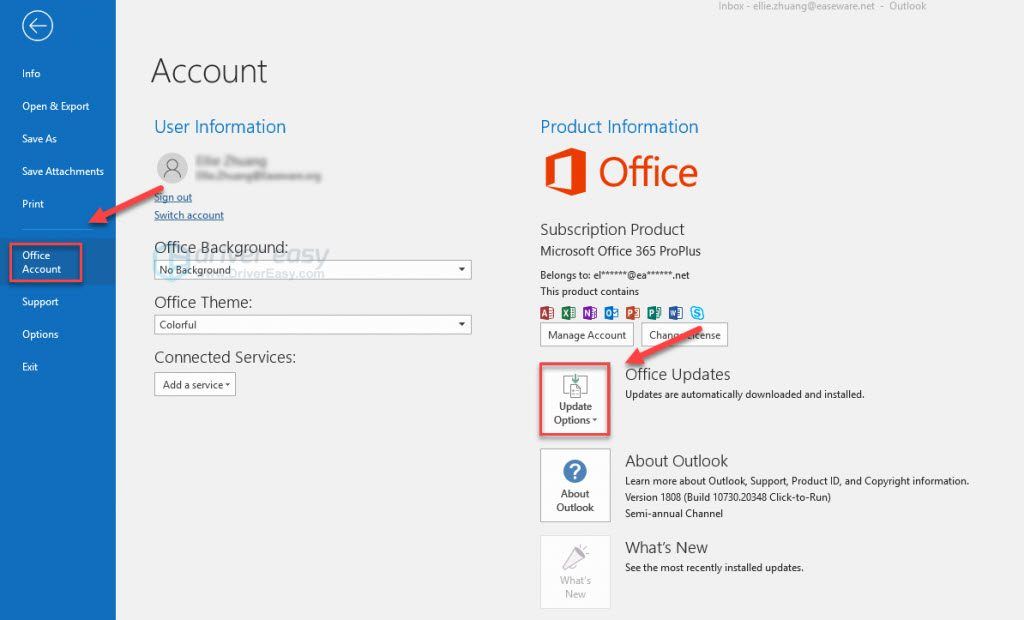
4) Click Update Now.
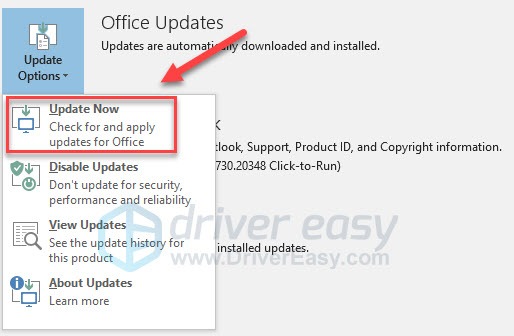
If there is no update available, or if Outlook still won’t connect, check the fix below.
Fix 5: Repair your Outlook account
Incorrect account settings may also trigger the Outlook connecting problem. To keep Outlook running smoothly, you need to verify that your account settings are correct. Here is how to do it:
1) Run Outlook.
2) Click File.

3) Click Account Settings, and then click Account Settings in the drop-down menu.
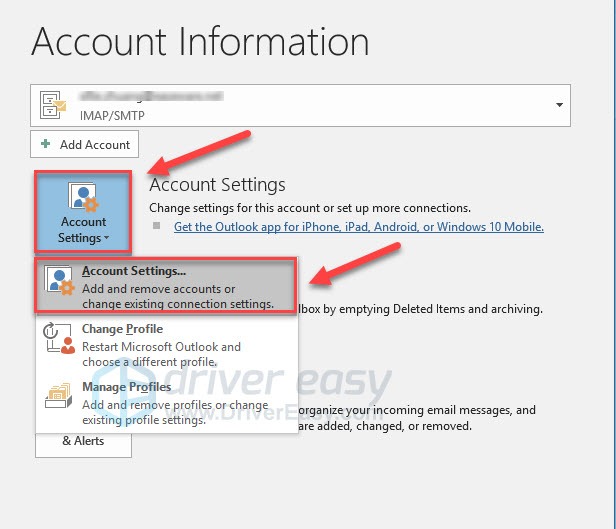
4) Select your account, and then click Repair.
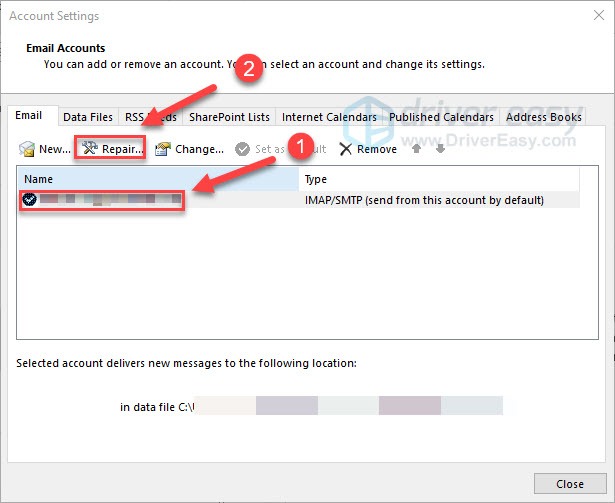
5) Click Next, and then follow the on-screen instructions to repair your account.
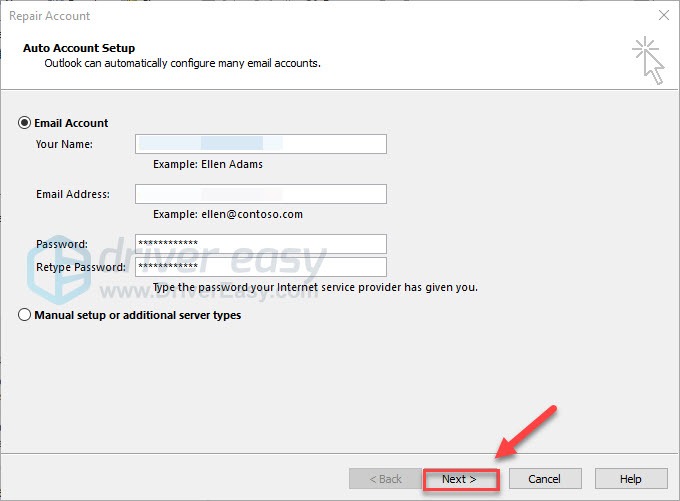
After the process is complete, reopen Outlook and check if it runs smoothly. If your problem persists, try the next fix.
Fix 6: Remove unnecessary Outlook add-ins
Faulty add-ins running on top of Outlook can also affect its functionality. To check if your issue is caused by a specific add-in, follow the instructions below:
1) Run Outlook.
2) Click File.

3) Click Options.
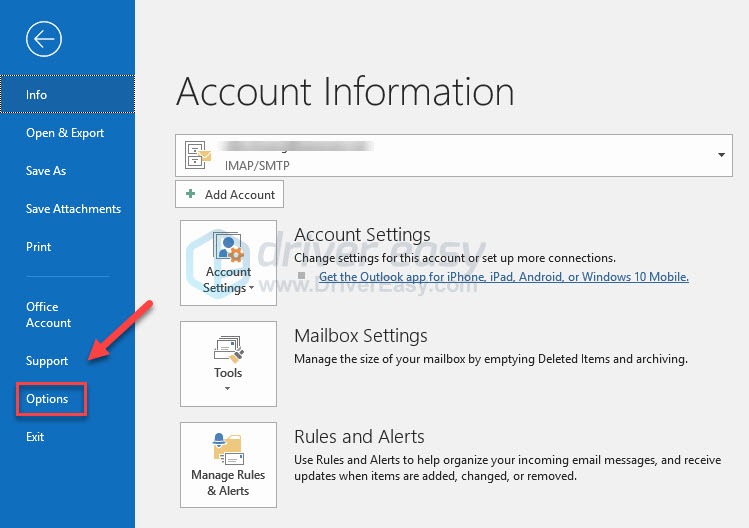
4) Click Add-ins.
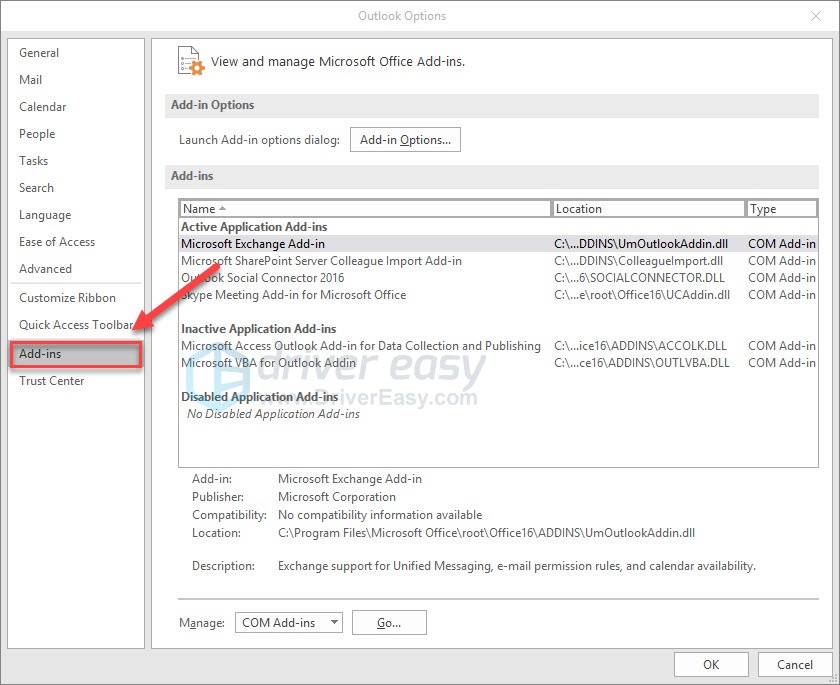
5) Verify the Manage option is set to COM Add-ins. Then, click Go.
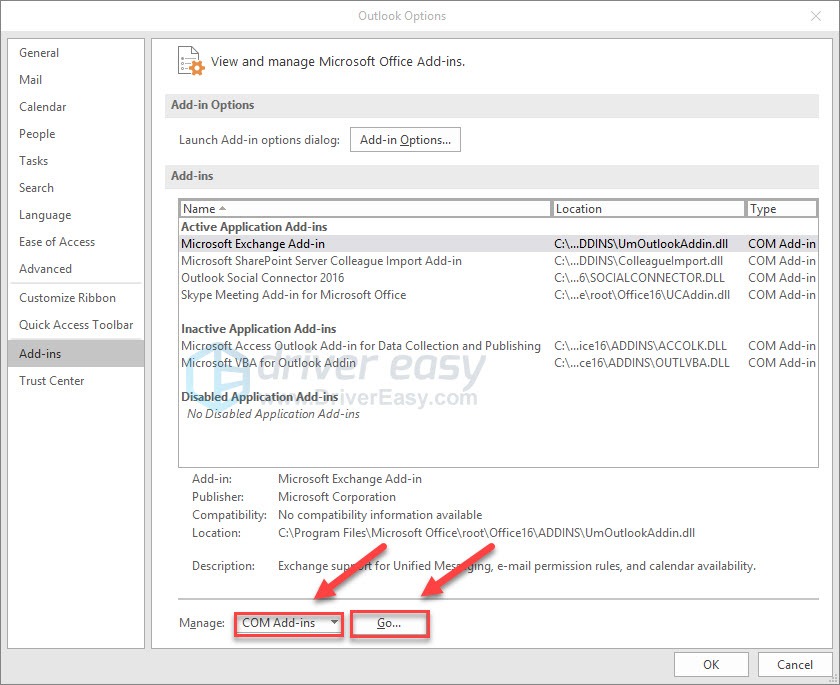
6) Uncheck the box next to the non-essential add-ins to disable them. Then, click OK.
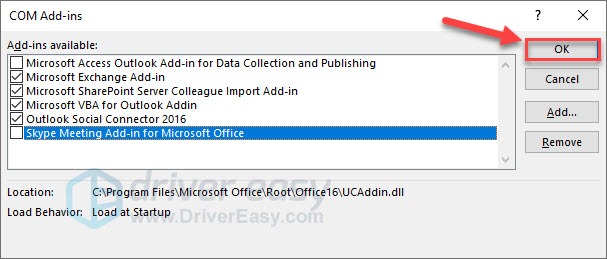
Reopen Outlook to see if this worked for you. If your problem still exists, try the next fix.
Fix 7: Rebuild the Outlook data file
Corrupted or damaged Outlook data files can also cause this problem. In this case, rebuilding the Outlook data file can fix it. Follow the instructions below:
1) Run Outlook.
2) Click the File tab.

3) Click Account Settings, and then click Account Settings in the drop-down menu.

4) Click the Data Files tab. Then, select your account and click Open File Location.
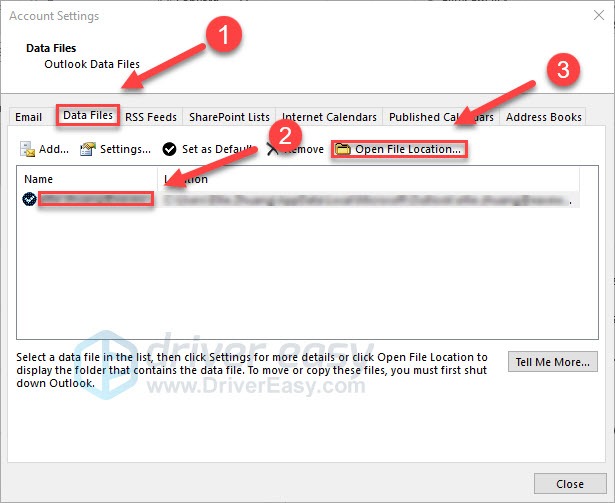
5) If you find an .ost file in the current window, right-click the file, and then click Rename.
If you see a .pst file instead, skip this fix and check Fix 8 below.
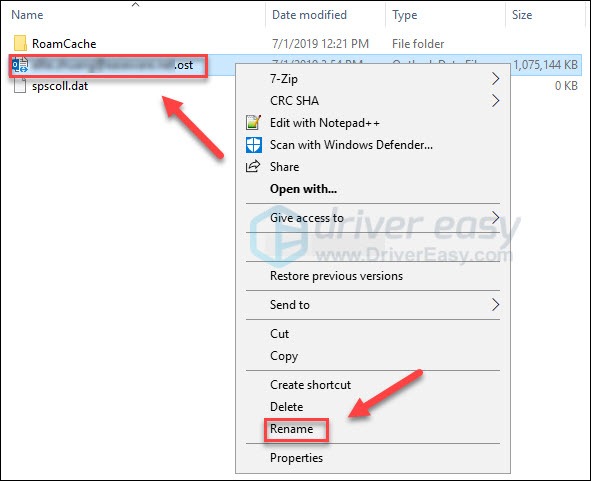
6) Change the file name extension to .old for the .ost file.

7) Reopen Outlook and wait for it to rebuild your data file.
If your problem persists, check the fix below.
Fix 8: Reinstall Office 365
If none of the above fixes helped, reinstalling Office 365 is very likely the solution for you. Here is how to do it:
1) On your keyboard, press the Windows logo key and type control. Then, click Control Panel.
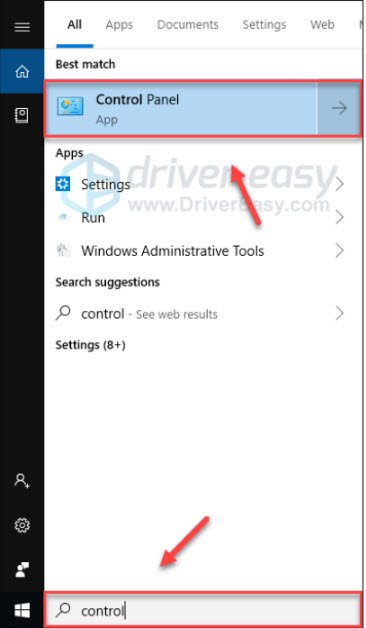
2) Under View by, click Category. Then, click Uninstall a program.
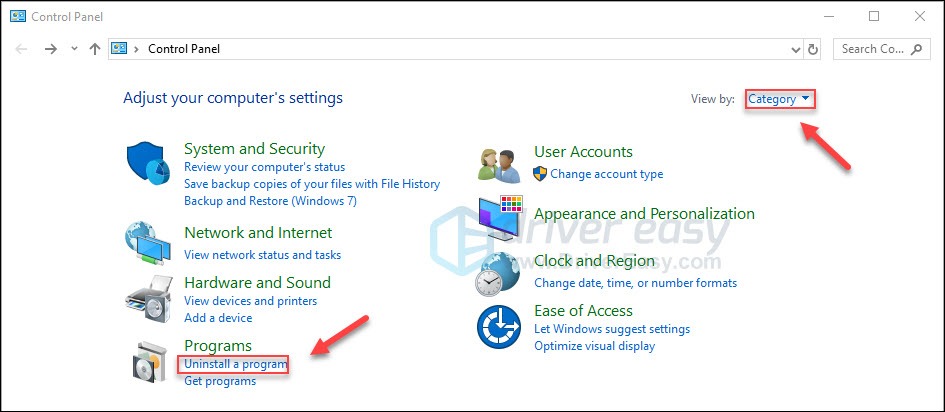
3) Right-click Microsoft Office 365, and then click Uninstall.
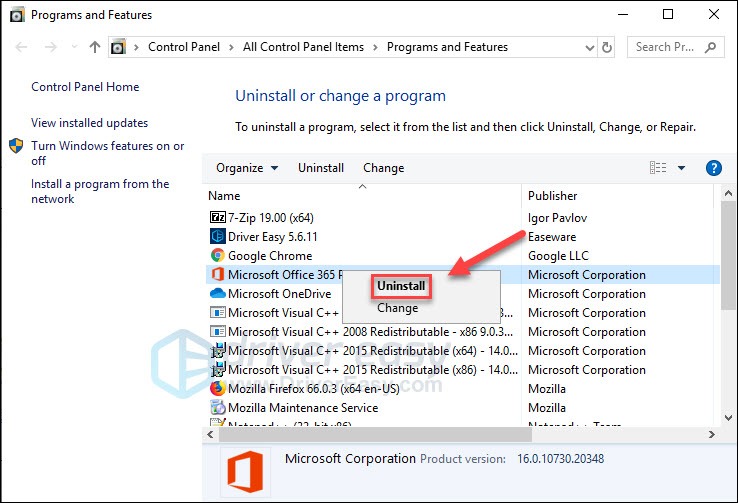
4) Go to Office 365 official website and click Sign in to sign in your account.

5) Click Install Office, and then click Office 365 apps to download Office 365.
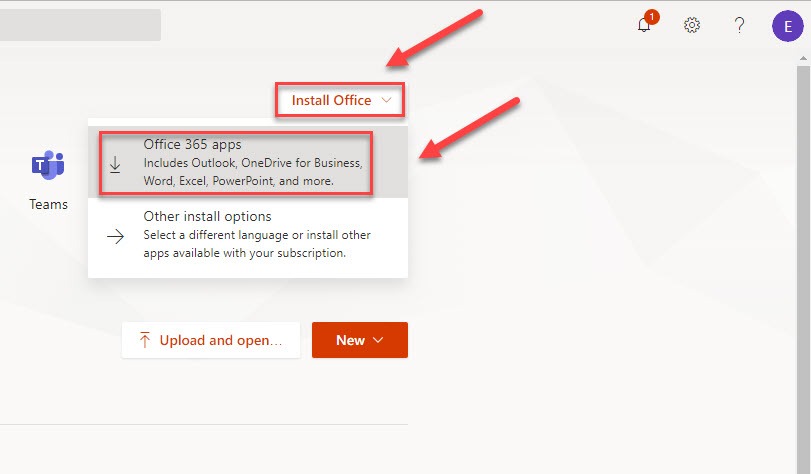
6) Open the downloaded file and follow the on-screen instructions to install Office 365 again.
Hopefully, one of the fixes above has helped resolve your problem. Please feel free to leave a comment below if you have any questions or suggestions.






